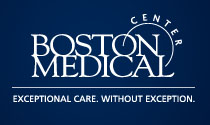Assessing Screening Plus Brief Intervention's Resulting Efficacy (ASPIRE) to Stop Drug Use
| Status: | Archived |
|---|---|
| Conditions: | Psychiatric |
| Therapuetic Areas: | Psychiatry / Psychology |
| Healthy: | No |
| Age Range: | Any |
| Updated: | 7/1/2011 |
| Start Date: | April 2009 |
| End Date: | March 2013 |
Efficacy/Effectiveness of Unhealthy Drug Use Screening/Brief Intervention Models
The objective of this study is to test whether screening and brief intervention for drug use
among primary care patients leads to improved drug-related outcomes (such as decreased drug
use and consequences).
The efficacy of screening and brief intervention (SBI) for drug use among primary care
patients is unknown. National organizations do not recommend universal screening. But policy
is at odds with the evidence: federal efforts to disseminate SBI are underway, and
reimbursement codes to compensate clinicians have been developed. Thus there is a need to
study SBI for drug use. The objective of this study is to determine the efficacy of two
models of brief intervention (BI) for decreasing drug use and consequences in primary care
patients. In collaboration with a state project implementing SBI as part of a federal
program, we will screen patients in a large hospital-based primary care practice for drug
use. We will then enroll screen-positive subjects, randomly assign them to 1 of 3 groups,
and follow them for 6 months. Subjects in 1 intervention group will be assigned to a
standard BI model, conducted by trained health advocates implementing a Federal program
locally. In another group, subjects will be assigned to an enhanced BI model that includes
an optional booster contact and is conducted by master's-level counselors trained and
monitored intensively. The control group will receive information (i.e., a written list of
local resources to help people using drugs) and, at the end of six months, standard BI if
they are still using drugs.
All subjects will be assessed regarding substance use and consequences, HIV risk behaviors,
costs, healthcare utilization and receipt of substance dependence treatment. The primary
outcome is drug use at 6 months; secondary outcomes are drug use consequences, including HIV
risk behaviors, and receipt of substance dependence treatment (among those with dependence).
We hypothesize that the standard BI and the enhanced BI will each have greater efficacy than
screening and resource information alone for decreasing drug use, decreasing drug use
consequences and HIV risk behaviors and increasing receipt of treatment for those with
dependence.
Additionally, costs will also be compared. Results of this study re: efficacy and costs of
brief intervention for drug use will be essential for making decisions about disseminating
drug use SBI in primary care settings.
This study will enroll two cohorts:
1. We will enroll 450 subjects with an ASSIST Substance-Specific Involvement (SSI) Score
of 4 or greater in order to test our primary hypotheses. Primary analyses (i.e., effect
of each BI on unhealthy drug use) will be restricted to subjects with an ASSIST SSI
Score of 4 or greater.
2. We will enroll an additional 200 subjects with an ASSIST SSI Score of 2 or 3,
indicating some, but lower risk drug use. Patients with these scores are included in
clinical interventions, but because there are no data on effectiveness in the
literature, this cohort will not be included in primary analyses and instead will be
included only in secondary and exploratory analyses. We will examine potential
preventive effects of BI (either) on subjects with lower level drug use.
We found this trial at
1
site
Boston Med Center Boston Medical Center (BMC) is a 496-bed academic medical center located in...
Click here to add this to my saved trials
